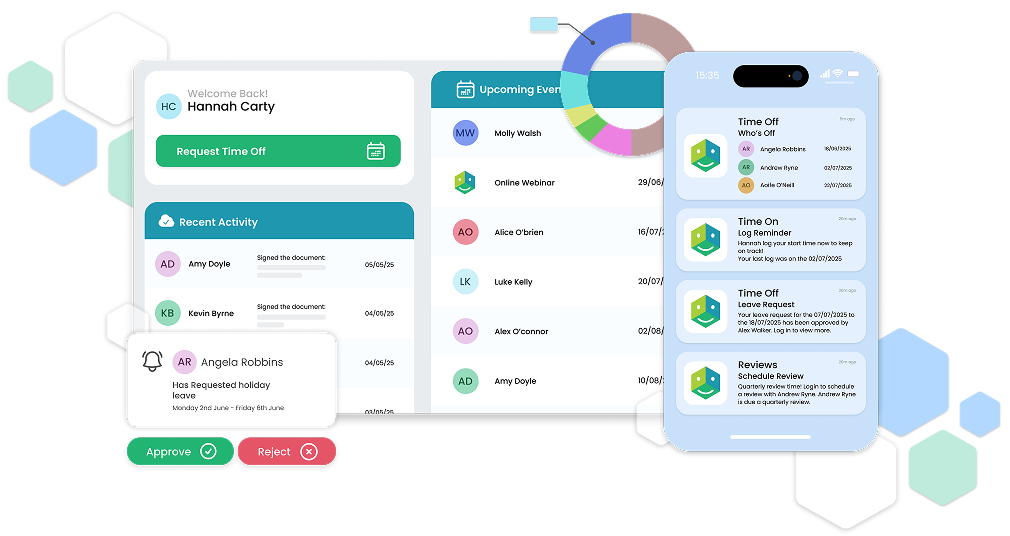Annual reviews made sense for a while.
Companies needed a method for measuring progress, benchmarking development, and criteria for awarding promotions.
During World War II, the US Army developed a ranking system to assess and promote officers. It was how they decided who went on assignments and who deserved to climb the ranks. Naturally, it wasn’t long before the corporate world jumped on the bandwagon.
But that was nearly 100 years ago. And the working world has changed dramatically. Our jobs are more dynamic, the technology we use is more sophisticated and fast-evolving, plus businesses are having to pivot more frequently to meet the needs of their customers.
Annual reviews are an institution no longer fit for our modern working practices. The question is: what should we do instead?
Annual Performance Reviews Can Be Stressful and Lead To Anxiety
For many businesses, a lot still rides on the annual review system.
Performance reviews play an integral role in helping leaders decide who should be promoted, what learning and development should take place, and what kind of talent is missing from the company.
But they also make people feel terrible. The practice is anxiety-inducing and may force your people to shut down about their real feelings and experiences. When just 14% of employees are motivated by their performance reviews, the practice isn’t exactly stimulating better outcomes for companies either.
Leaders can’t depend on annual reviews for honest communication or significant progress. They can’t even rely on them for standardised outcomes – since the effectiveness of an annual review is skewed by whoever is conducting them.
More Harm Than Good – Why Should You Get Rid Of Annual Performance Reviews
While the practice may appear to be standardised from the outside, personal biases can easily obscure the quality of the assessment. Leaders who aren’t trained to deliver feedback effectively can easily do more harm than good, through little fault of their own.
The quality of feedback given also hinges on the environment it’s delivered in. Without a sense of psychological safety, teams and leaders are unlikely to feel confident giving and receiving feedback.
If feedback mechanisms are only used to deliver bad news, the practice quickly becomes stigmatised. Think about it – when’s the last time you heard someone say they’re looking forward to their annual review?

Leaders are also at risk of visibility bias, where they rate employees whom they see more frequently more highly than those they don’t. And let’s not ignore the aspects of performance that are harder to see – the individual who knows how to keep the peace in a team full of dynamic personalities. Or the one who acts as an emotional support or confidant for their colleagues.
The events of an entire year are far too diverse and far-reaching to be judged in a single annual meeting. What’s more, the important details and opportunities for learning are far easier to capitalise on when they’re acknowledged as they happen.
Reviewing performance is an essential part of cultivating talent in your company. But it takes an ecosystem, not a one-and-done annual practice, to create meaningful progress.
Performance Reviews vs. Continuous Feedback – An Alternative Route
You don’t have to say goodbye to your annual review completely. Use it to recap the year, talk about goals for the months ahead, and reconnect with your team.
But it shouldn’t be your main feedback mechanism.
A culture of continuous feedback – where addressing progress and aiding development are enshrined in your daily practices – is a smarter route forward.
According to the Ibec HR update 2023, the biggest challenge respondents identified was the availability of talent (83%). Unless companies have a culture of continuous feedback, it’s likely they’re only scratching the surface of their existing talent pool.
The companies that develop a continuous feedback culture are more prepared for the next generation of talent, too. Gen Z, who are only now finding their feet at work, are even more likely to need high-frequency feedback and coaching in their careers.
We already know that continuous feedback works. Patagonia delivers a continuous cycle of feedback and support as part of its regenerative performance approach. Instead of depleting employees, they focus on regenerative practices that add to the employee experience. Patagonia’s increased engagement speaks for itself.
There are much better ways to manage performance than the annual review. And with the right tools, you can support employees with personal development and tailored feedback – without jeopardising their wellbeing in the process.









